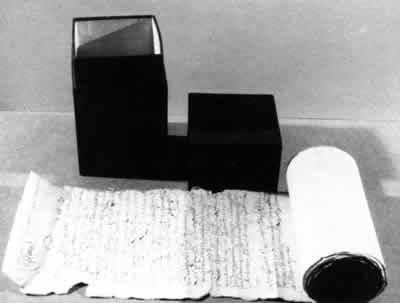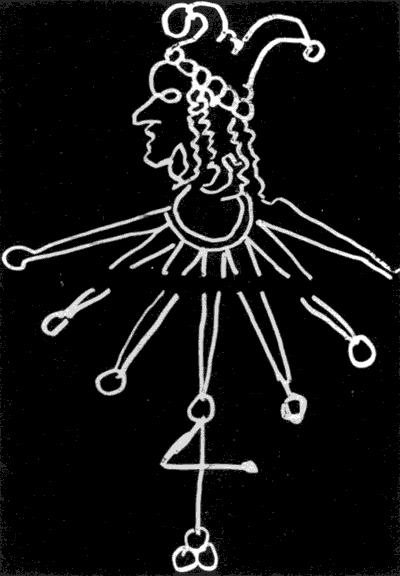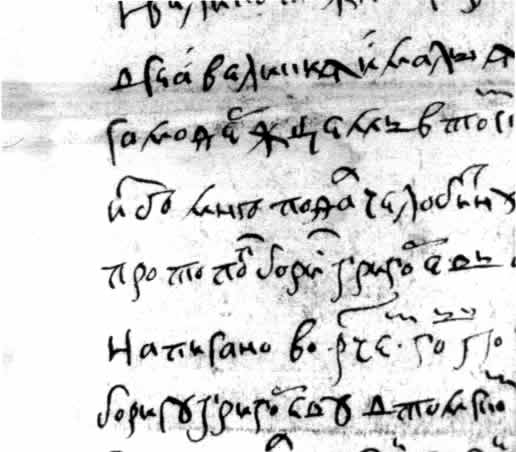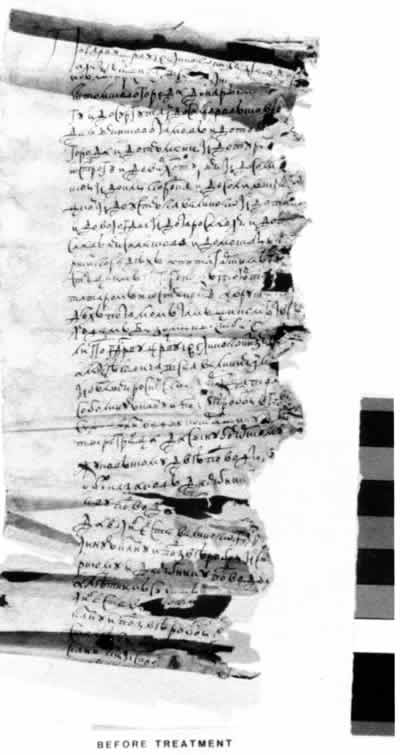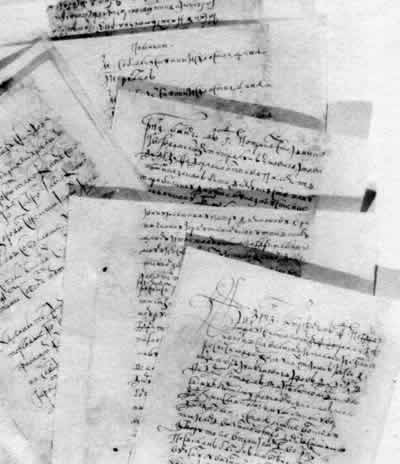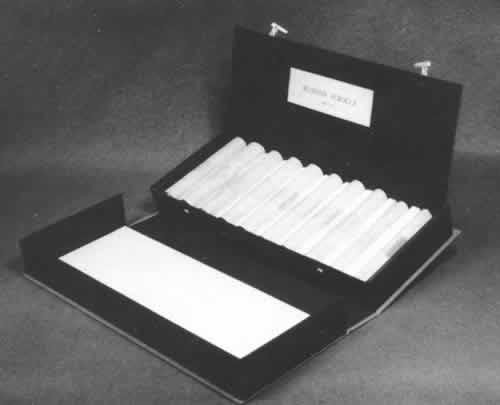The Treatment of Early Russian Manuscript Scrolls
by Ted StanleyIntroduction
Fig. 1 Czar Michael Romanov
The Law Library of the Library of Congress has one of the very few collections of original early Russian manuscript scrolls in the country. It is considered among the Law Library's most important collections. the scrolls date from the 1620s to the 1740s. the period coincides with the reign of the earliest Russian czars such as Michael Romanov (fig. 1) and Peter the Great. the scrolls also coincide with a period of Russian history called the Time of Troubles. the period was a time of turbulent transition for all of Russian society and law. in some respects, it mirrors present day Russia's upheaval and transition.
The scrolls are legal documents such as trade edicts, land grants, tax decrees, briefs and other legal instruments. There is very little historical background that directly concerns the scrolls. Scholars consider the scrolls rare and valuable because they were never meant to exist as permanent records. the scrolls were written in an ancient Russian dialect that is no longer commonly used. Only a few people can translate the dialect today.
The Scroll Collection
Fig. 2 Former Law Library Scroll Storage Container
The collection consists of 46 scrolls. the scrolls had been stored in the Law Library collections crammed into 10 red buckram covered boxes made of poor quality paper board (fig. 2). the rolled scrolls had been stored vertically on end within the boxes. Degraded rubber bands bound the scrolls inside the boxes. a descriptive card sometimes accompanied a scroll.
The scrolls are composed of single and multiple sheets. the scrolls are all approximately the same width of about 16.5 cm., but the lengths vary from 15 cm. to over 13 meters or approximately 40 feet. Individual sheets of a scroll are normally about 16.5 cm. W. x 27 cm. H. However, one sheet measured 10 cm. in height. the sheets had been cut almost in half across the chain and laid lines. This produced a straight edge on the left side of a sheet of paper and a deckled edge on the right side. Multiple sheet scrolls were formed by attaching what would have been the right and left fore-edges of a whole sheet of paper end to end with a starch adhesive. Most often the scrolls are initialed across the join at the verve. the initial could be that of the scribe.
One of the scrolls contains a fold out map. the map represents a parcel of land. No descriptive card accompanied the scroll so that one can only speculate that the scroll and map represent some land grant decree by a czar.
The substrate of the scrolls is composed of handmade laid paper. Iron gall ink, carbon black ink and perhaps a combination of the two inks were used to produce the script.
Fig. 3 Watermark's Two Halves
The scrolls contained over 20 watermarks which were recorded through transmitted light using 35mm Kodak Ektachrome film. the sheets were cut through the watermarks. for example (fig.3), a fool's cap watermark was cut in-half leaving the upper portion. the missing portion of that watermark was found on another sheet and matched the upper portion of the fool's cap.
Historical research indicates that Russian papermaking was not abundant until after the middle of the 18th century. Only two Russian paper mills are recorded in the 17th century. the mills were not productive and produced low quality paper. Seventeenth and 18th century Russia tended to import much of its paper from French, Dutch and Italian paper mills.
Seals were sometimes present at the lower portion of a scroll. a folded strip of paper traveling through two small slits of the scroll's substrate usually anchors the seal to the scroll. in some cases the seals had long since disappeared.
Condition of the Scrolls
Generally, the paper substrates were in excellent condition. Surface pH readings of the scrolls hovered at an average of approximately 5.2. the paper seemed fresh and had good rattle. However, a number of scrolls did have significant damage. Many scrolls suffered damage along their deckled edges from improper storage. Stains from water damage and mold were present. Sometimes damage occurred at the first sheet of a scroll which was vulnerable when exposed to handling. Damage occurred along several sheets of a scroll as well. Single sheets suffered from damage and abuse. Prior restoration of the scrolls was evident by the presence of re-enforcements. the re-enforcements were either of a neutral tone wove paper or of a blue toned wove paper. a strong starch paste adhered the re-enforcements.
Fig. 4 Distributed Carbon Black Ink
Iron gall ink appeared to have caused little damage to the paper substrate. None of the iron gall ink had eaten away through the paper to the verve on any of the scrolls. However, the carbon black ink had left a thin dust of black powder over the sheets in some instances (fig. 4). Apparently, the binder of the ink,
traditionally gum, had partially degraded. It also seems likely that the mechanical action of rolling and unrolling the scrolls over many years exacerbated the condition. in some instances, the carbon black ink was soluble in water, and in others it was not as observed during rigorous testing. the iron gall ink appeared to be very stable in water.
One seal was found cracked and damaged. It was tenuously hanging to its paper strip anchor.
Treatment Process
Before treatment, the scrolls were collated, photographed and thoroughly examined. Generally, sheets were dry cleaned with ground Staedtler Mars Plastic erasers. When appropriate, sheets were separated locally via methyl cellulose poultices or small Gore-Tex damp packs, as in the case of only the first several sheets being damaged. the sheets were then washed in calcium-enriched water baths and resized with a 1% solution of Spectrum A4C Methyl cellulose. the sheets were re-attached to the scroll with wheat starch paste. Simple tears and losses were repaired with Japanese paper and wheat starch paste.
Four sheets were treated with a .01% solution of Sigma amylase, no. 1279, type 11-A, in a bath to release former re-enforcements. the objects were washed in running water for approximately two and one-half hours after the treatment. the amylase was used after other treatments had failed.
A cracked and split dark gray/black colored seal was treated. Polyvinyl acetate mixed with a black water based acrylic paint adhered the seal pieces back together and filled cracks.
Fig. 5 1679 Tax Decree (Czar Feodor Aiekeivich)
One particular scroll suffered overwhelming damage from exposure to water and moisture (fig. 5). the scroll is a 1679 tax decree from Czar Feodor Aiekseivich. There was the presence of pink mold stains and carbon black powder from the ink over the entire scroll. the paper substrate was extremely pulpy and weak. the deckled edges had disintegrated into a mass of tears and loses. the twenty-sheet scroll had also broken into five sections. the combined sections measured approximately twenty feet in length.
At first glance, the condition of the carbon black ink and the strengthening of the paper appeared to be the most problematic factors of the treatment. Careful examination and testing revealed that only the upper portion of the inked letters had degraded. the binder of the remaining ink was found to be very stable and still intact after exhaustive testing. It also appeared to be quite insoluble in the presence of water after running numerous tests.
After delicately cleaning the surfaces with ground Staedtler Mars Plastic erasers and a soft Japanese brush, the treatment proceeded with washing the sections in a large sink and separating them into individual sheets. During the washing phase, a one percent solution of a hydroxypropyl methyl cellulose mix was used as a surfactant for additional cleaning with a soft Japanese brush. the sheets were deacidified in magnesium bicarbonate and dried. the paper substrates appeared fresher and somewhat brighter as a result of the treatment. However, they remained weak and fragile.
Fig. 6 Leafcasted Sheet
I proceeded to stabilize and strengthen the sheets by leafcasting them individually. an early model Recurator Leafcasting machine was used for the treatment. a pulp solution of 65% abaca and 35% cotton [inter half beaten pulp filled the losses of the scroll sheets (fig. 6). Toning of the pulp was not required because of the agreeable natural color of the pulp fibers to the artifact. the sheet was lightly buffered with magnesium bicarbonate to replace any of the previous buffering which may have washed away during the leafcasting. the sheet was then sized on the machine using the suction to pull the sizing through the object and pulp. Spectrum A4C methyl cellulose was used at approximately 2%.
The sheet was removed from the bed, and excess water of the cast object was blotted. the sheet was lined with tengujo Japanese paper and wheat starch paste. Tengujo paper was chosen because of its extremely light weight and sheerness. It would not overwhelm the artifact. the lined sheet was then dried between felts and weights.
Fig. 7 Completed Treatment
The completed sheets appeared in better condition and had the strength to withstand handling (fig. 7). the aesthetic qualities of the scroll also remained undisturbed. the sheets were then carefully joined with wheat starch paste to reform the scroll.
Conservation Storage
Fig. 8 Custom Made Scroll Housing
Lage Carlson, Head, Phased Conservation Section, constructed special boxes made of high quality lignin-free board for the scrolls. Concave wells were designed to hold the curved scroll forms. the housing comfortably and safely accommodated the scrolls in their rolled and single sheet flat forms (fig. 8).
Recommendations were proposed to microfilm the collection and restrict their availability. This would help reduce the stressful and damaging action of rolling and unrolling the scrolls as well as the normal wear that occurs during handling.
Summary
The treatment and stabilization of the Russian scroll collection helped to lengthen the life of important manuscript artifacts that were not meant to have existed for so long a time. Leafcasting of the most delicate and fragile paper substrates proved invaluable. It provided an efficient and practical method of treatment. Storing and safe guarding the treated scrolls in archival quality custom made housing is also extremely beneficial to the collection's long term preservation.
Ted StanleyThis paper is part of a presentation originally presented at the 1992 A.I.C. meeting under the title: "The Case Studies of a Fraktur and of an Early Russian Scroll: the Treatment of Fragile Paper Objects Having Soluble or Damaged Media." The treatment occurred while the author was a Senior Paper Conservator at the Library of Congress, Washington, D.C.
Special Collections Paper Conservator
Princeton University
Publication History
Received: Fall 1992
Paper delivered at the Book and Paper specialty group session, AIC 20th Annual Meeting, June 2-7, 1992, Buffalo, NY.
Papers for the specialty group session are selected by committee, based on abstracts and there has been no further peer review. Papers are received by the compiler in the Fall following the meeting and the author is welcome to make revisions, minor or major.

